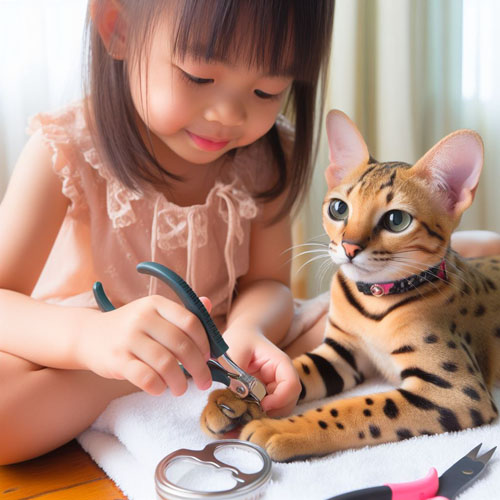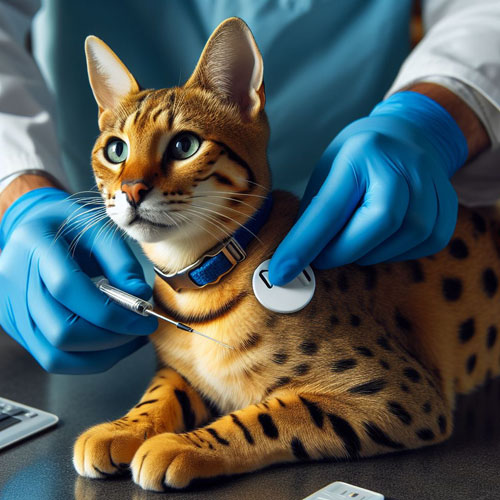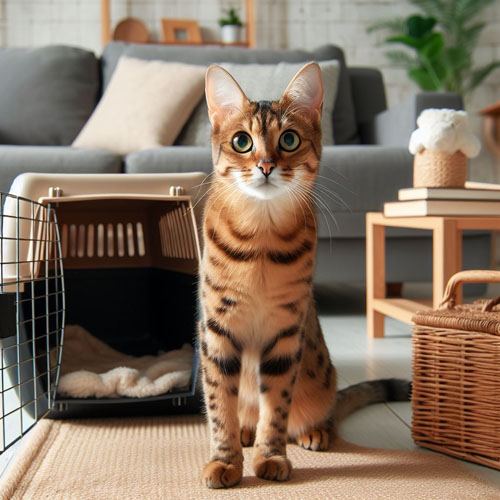A Safe Environment For Your New Savannah Kitten
A Savannah Cat is a unique breed of hybrid cat that is derived from crossing a domestic cat with an African Serval. The Serval is a tall cat with a long, tall, sleek frame large rounded ears, a long neck, and a 3/4 length tail. The Savannah Cat, is a domestic breed that is show-able in The International Cat Association (TICA). Due to its heritage with the Serval Cat, there a few States (as well as some countries) that disallow the Savannah.
Savannahs get compared to dogs quite often. Mostly, for behaviors like fetching, playing in the water, and harness training for outdoor walks. Of course, nothing is absolute and while not all of Savannahs will have some or all of these behaviors, a person can usually see one of these unique cat traits.
Making a home safe for a Savannah is like making a home safe for a baby, but with the added challenge of the Savannah’s ability to jump. This requires baby-proofing the entire home, from the floor to the ceiling, by removing any potential hazards or tempting items that could lead to mischief.
Understanding the Savannah Cat
Savannah cats are known for their energetic and curious nature. Being a hybrid of a domestic cat and an African Serval, they have a natural inclination to explore their surroundings and exhibit a high level of agility. As a responsible pet owner, it’s essential to provide a safe and secure environment for your Savannah cat to thrive in your home.
Prevent Indoor Escapes
Savannah cats are known for their remarkable jumping ability. They can leap to impressive heights and are often intrigued by open windows and high ledges. To prevent them from escaping, make sure all windows are securely screened, and consider installing window guards to prevent accidental falls. Additionally, ensure that balconies and high perches are off-limits to prevent potential injuries.
Electrical Safety Measures
These curious felines are attracted to dangling cords and wires, posing a risk of electrocution or injury. Safeguard your home by using cord protectors or concealing cords behind furniture to minimize the temptation for your Savannah cat to chew on them. Furthermore, consider using outlet covers to prevent accidental shocks.
Securing Hazardous Substances
It’s crucial to store household cleaners, chemicals, and toxic plants in secure cabinets or high shelves. Savannah cats are known to be inquisitive and may inadvertently ingest harmful substances. By implementing these preventive measures, you can protect your pet from potential poisoning and health risks.
Creating Safe Play Areas
To fulfill their active nature, Savannah cats require ample space for physical and mental stimulation. Designate specific play areas equipped with interactive toys, scratching posts, and climbing structures to redirect their energy and prevent them from engaging in destructive behaviors.
Supervised Outdoor Encounters
While Savannah cats are known for their love of outdoor exploration, it is NOT safe to just let them run free. Consider building a secure outdoor enclosure or “catio” where your pet can safely experience the outdoors while being protected from potential dangers such as predators, traffic, and disease. Another option is harness training for walks outdoors.
Conclusion
In conclusion, understanding the unique traits and behaviors of Savannah cats is essential for cat-proofing your home effectively. By implementing these proactive measures, you can create a secure environment that meets their physical and emotional needs while mitigating potential risks. Ultimately, cat-proofing your home not only safeguards your pet but also fosters a harmonious coexistence within your living space.





